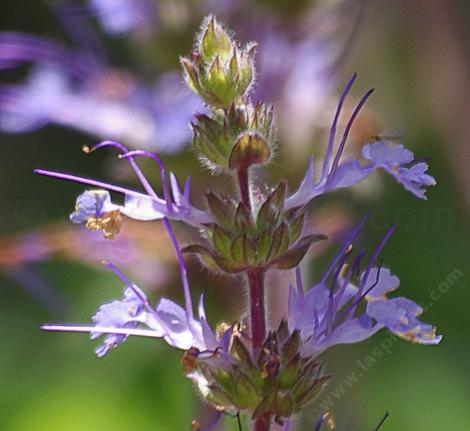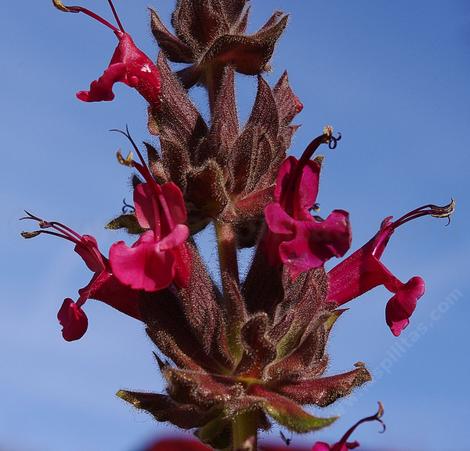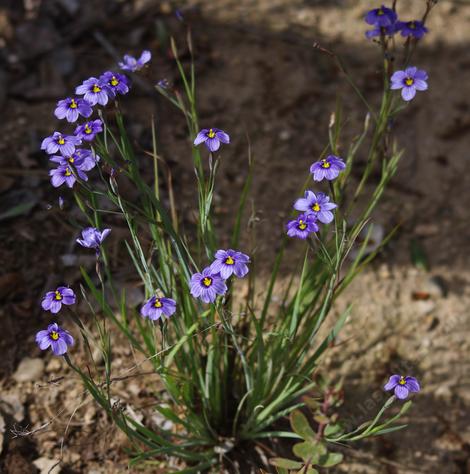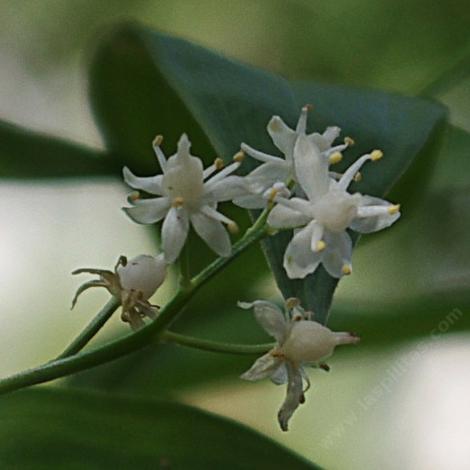Plants For Central Oak Woodland

Rubus ursinus, Pacific blackberry, is a native blackberry that ranges from Baja to British Columbia and into Idaho. In southern California this blackberry doesn't always set fruit. It appears like ... Learn more.

A tall deciduous shrub that is native from Texas to California to B.C.. It has a grey leaf that is only 1/4 inch wide and 2-5 inches long. I have seen these in Lee Vining, and they were growing in an... Learn more.

A 15-30' deciduous shrub-tree. Yellow stems and light green leaves. Native through much of the Southwest. Not a fast grower. It spends most of its first few year growing roots. We have seen this in th... Learn more.
A 15-30ft deciduous shrub-tree. Yellow stems and light green leaves. Native through much of the Southwest. Not a fast grower. It spends most of its first few year growing roots. Learn more.

A grey willow that is 4-6ft tall in our area. It can get to 15ft in the San Joaquin Valley. It is native all over Calif. (below 3000ft) and into Baja and Oregon. Excellent for stream stabilizing as it... Learn more.

A 10-25\' deciduous tree-shrub. A stream-side plant. It likes full sun and water. Good for stream stabilization. This species is native to much of Ca. thru Ariz. to Utah. It is native on the nursery s... Learn more.

A 10-20\' deciduous shrub or tree. We list it for stream bank stabilization. This one is native to most of Ca. north to Idaho and Alaska. It is native on the nursery site in the seasonal creek. A pion... Learn more.

Salvia sonomensis X Salvia clevelandii 'Gracias' is all the information we can find as to the history of the plant. The plant is definitely a Salvia sonomensis, the hybridization with S. clevelandii ... Learn more.

A very colorful annual of hot interior areas. We do not generally grow annuals. Here's a native sage page where you can see all the sages of California. Learn more.

Salvia sonomensis is a creeping flat perennial sage that can spread to 10' across. The sage flowers are blue-violet from May to June, appearing in a 6"spike above gray-green leaves that lie on the ... Learn more.

Salvia 'Mrs. Beard' appears to be a stable hybrid of Creeping Sage, Salvia sonomensis and Black Sage, Salvia mellifera that's low growing with a nice blue flower. A low growing, dark green sage that ... Learn more.

Hummingbird Sage is an one foot high perennial that spreads by rhizomes. This sage is native to coastal California from Napa to Orange. As the name implies Hummingbirds work this species very heavily... Learn more.

'Powerline Pink' Hummingbird Sage has the largest flowers of any hummingbird sage we have ever grown. The flowers are so large they fall over if given too much shade along the coast. It does best in f... Learn more.

Mexican elderberry or Tapiro,(Sambucus mexicana) is a deciduous shrub to tree with butter yellow flowers in Apr.-Aug. followed by purple berries in September-October. . This elderberry is native to... Learn more.

A perennial with small yellow flowers, that will grow well in shady areas of oak woodland under trees such as Quercus douglasii and Pinus Sabiniana, with Achillea millefolium, Galium sp., Thysanocarp... Learn more.

Native in our San Luis Obispo area in the shade of Quercus douglasii and Pinus Sabiniana. In oak woodland/chaparral sites where the understory is dominated by alien, annual grasses, this Sanicule su... Learn more.

Scrophularia californica, California Figwort is a two to four foot perennial with three foot spikes of red flowers. It is native along the coast and southern Sierras, from L.A. to B.C.. It is not a... Learn more.

Scutellaria austinae (Syn Scutellaria siphocampyloides), Skull Cap, is a little perennial that forms a clump a foot wide. The flowers are deep royal blue. Native to much of the mountains of Calif. up ... Learn more.

This checker bloom is a perennial with a small cluster of leaves at its base and a 2-3ft. spike of 1 inch deep pink flowers. The stems are rather lax as it grows in perennial grass thickets in season... Learn more.

Blue-eyed Grass, Sisyrinchium bellum is a 1 foot tall perennial with 1 inch blue flowers in Jan.-June. It is widely distributed in California on open, grassy slopes, Redwood forests. Blue Eyed Grass ... Learn more.

Commonly grows in shady places, under Oaks, in oak woodland/coastal sage scrub. Flowers are in a raceme followed by white berries. Goes dormant in the summer when no rain fall occurs and dies to base... Learn more.

Bluewitch is a 1-2' perennial with 1"flowers bright blue, with yellow centers and blooms most of the year. It has silver-gray foliage. Native in chaparral, Juniper-Oak woodland in central Calif. coast... Learn more.

California Goldenrod is a spectacular yellow flowered perennial that is very showy in the late summer to fall. Attracting pollinating insects and butterflies. Associated plants are commonly Rosa, Sym... Learn more.

This hedge nettle is native to moist spots in much of California. A good plant to put under the bird bath, in a dryland garden. Stachys albens will increase by rhizomes to the edge of the moist spot.... Learn more.

Companion plants include Dicentra, Asarum hartwegii, Acer macrophyllum, Cornus nuttallii, Actaea rubra ssp. arguta, Torreya californica, Heuchera micrantha, Pseudotsuga menziesii, Quercus kelloggii, C... Learn more.


